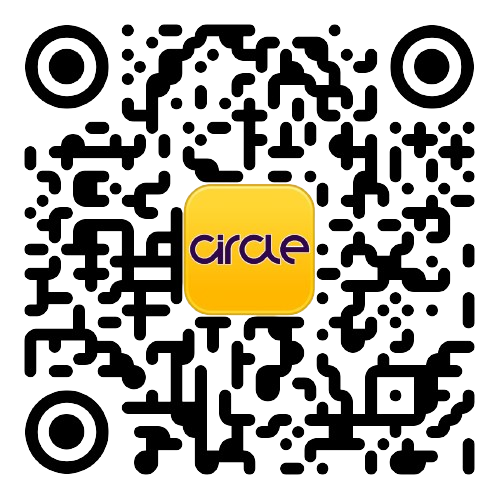Kategori Kemampuan Berpikir Kreatif Siswa dalam Menyelesaikan Soal Bunga Tunggal dan Majemuk
Keywords:
Creative Thinking Skills, Single and Compound InterestAbstract
The research was conducted to categorize and describe the creative thinking ability of students of SMK Ma'wattaibin Banjarejo Pagelaran in solving mathematical problems on single flower and compound flower materials. The research involved 13 students of grade X with different abilities in the even semester because according to the material, single flower and compound flower were taught. The research method used was qualitative-descriptive. Written tests and interviews were used for data collection. Students were given a written test with 2 questions containing indicators of creative thinking skills. The results of the students' answers were analyzed based on indicators of creative thinking ability and then categorized based on the level of creative thinking ability (TKBK). The indicators of creative thinking ability used are fluency, flexibility and novelty. There are five levels of TKBK, including TKBK level 0 (not creative), level 1 (less creative), level 2 (moderately creative), level 3 (creative) and level 4 (very creative). Data analysis techniques include data reduction, data presentation and inference. Triangulation techniques were also used in this study. The results showed that there were 38% students in the uncreative category, 47% students in the less creative category, 15% students in the moderately creative category and no students in the creative and highly creative categories. Students at the uncreative level cannot fulfill any of the indicators of creative thinking ability. Students in the less creative level can only fulfill the fluency indicator according to their abilities. Students at the moderately creative level can only fulfill the flexibility indicator according to their abilities. Teachers need to train different mathematical problems that have different answers for students. This research is limited to categorizing and describing students' creative thinking skills, as further research can be carried out in relation to strategies to improve students' mathematical creative thinking skills.
References
Anggraini, Y. (2021). Analisis Persiapan Guru dalam Pembelajaran Matematika di Sekolah Dasar. Jurnal Basicedu, 5(4), 2415–2422.
Arista, E. D. W., & Mahmudi, A. (2020). Kemampuan berpikir kreatif matematis dalam penyelesaian soal open-ended jenis PISA berdasarkan level sekolah. Pythagoras: Jurnal Pendidikan Matematika, 15(1), 87–99. https://doi.org/https://doi.org/10.21831/pg.v15i1.34606
Atiyah, A., & Nuraeni, R. (2022). Kemampuan Berpikir Kreatif Matematis dan Self- Confidence ditinjau dari Kemandirian Belajar Siswa. PowerMathEdu, 01(01), 103–112.
Chisara, C., Hakim, D. L., & Kartika, H. (2018). Implementasi Pendekatan Realistic Mathematics Education (RME) dalam Pembelajaran Matematika. Prosiding Seminar Nasional Matematika dan Pendidikan Matematika (Sesiomadika), 65–72. Retrieved from http://journal.unsika.ac.id/index.php/sesiomadika
Dalilan, R., & Sofyan, D. (2022). Kemampuan Berpikir Kreatif Matematis Siswa SMP ditinjau dari Self Confidence. Plusminus: Jurnal Pendidikan Matematika, 2(1), 141–150. https://doi.org/10.31980/plusminus.v2i1.1585
Darwanto. (2019). Kemampuan Berpikir Kreatif Matematis (Pengertian dan Indikatornya). Jurnal Eksponen, 9(2), 20–26.
Dirgantoro, K. P. S. (2018). Kompetensi Guru Matematika Dalam Mengembangkan Kompetensi Matematis Siswa. Scholaria : Jurnal Pendidikan Dan Kebudayaan, 8(2), 157–166.
Handayani, U. F. (2021). Kreativitas Siswa Kemampuan Tinggi dalam Memecahkan Masalah Matematika Kontekstual. Pi: Mathematics Educations Journal, 4(2), 91–101.
Handayani, U. F., Sa’dijah, C., & Susanto, H. (2018). Analisis Kemampuan Berpikir Kreatif Matematis Siswa SMP Dalam Menyelesaikan Soal Adopsi ‘PISA.’ Jurnal Math Educator Nusantara, 4(2), 143–156. https://doi.org/10.29407/jmen.v4i2.12109
Herdani, P. D., & Ratu, N. (2018). Analisis Tingkat Kemampuan Berpikir Kreatif Matematis Siswa SMP Dalam Menyelesaikan Open – Ended Problem Pada Materi Bangun Datar Segi Empat. JTAM | Jurnal Teori Dan Aplikasi Matematika, 2(1), 9. https://doi.org/10.31764/jtam.v2i1.220
Kadir, I. A., Machmud, T., Usman, K., & Katili, N. (2022). Analisis Kemampuan Berpikir Kreatif Matematis Siswa Pada Materi Segitiga. JAMBURA : Journal Of Mathematics Education, 3(2), 128–138. https://doi.org/10.34312/jmathedu.v3i2.16388
Mariani, Y., & Susanti, E. (2019). Kemampuan Pemecahan Masalah Siswa Menggunakan Model Pembelajaran Mea (Means Ends Analysis). Lentera Sriwijaya Jurnal Ilmiah Pendidikan Matematika, 1(1), 13–25.
Muharram, M. R. W. (2012). Quantum Mathematic, Memahami Nilai-Nilai Matematika Untuk Membangun Karakter Bangsa. Seminar Nasional Matematika Dan Pendidikan Matematika, (November), 599–610.
Nisa, A., & Salafudin. (2022). Pengembangan LKS Berbasis Etnomatematika Budaya Jawa Tengah untuk Meningkatkan Kemampuan Pemecahan Masalah Materi Aritmetika Sosial. SANTIKA: Seminar Nasional …, 10–23. Retrieved from https://proceeding.uingusdur.ac.id/index.php/santika/article/view/1093
Nurhayati, P., Emilzoli, M., & Fu’adiah, D. (2022). Peningkatan Keterampilan Penyusunan Modul Ajar Dan Modul Proyek Penguatan Profil Pelajar Pancasila Kurikulum Merdeka Pada Guru Madrasah Ibtidaiyah. JMM (Jurnal Masyarakat Mandiri), 6(5), 3602–3612. https://doi.org/10.31764/jmm.v6i5.10047
OECD. (2019). Snapshot of performance in reading, mathematics and science. https://doi.org/10.1787/cbb85a0d-en
Puka, A. O. B., Weking, M. K., & Betan, P. R. (2021). Analisis Kemampuan Pemahaman Konsep Matematika pada Kelas XI Budaya di SMAK St. Fransiskus Asisi Larantuka. Jurnal Penelitian Pendidikan Matematika Sumba, 3(1), 12–23. https://doi.org/10.53395/jppms.v3i1.238
Sartika, I. (2019). Kemampuan Berpikir Kritis Dalam Pendekatan Matematika Realitik di Sekolah Dasar. AR: RIAYAH: Jurnal Pendidikan Dasar, 3(2), 101–118.
Siagian, M. D. (2016). Kemampuan Koneksi Matematik dalam Pembelajaran Matematika. MES : Journal of Mathematics Education and Science, 2(1), 58–67.
Suastika, K. (2017). Mathematics Learning Model of Open Problem Solving to Develop Students ’ Creativity. 12(6), 569–577. Retrieved from https://bit.ly/2wsOLK4
Sulistiani, E., & Masrukan. (2016). Pentingnya Berpikir Kritis dalam Pembelajaran Matematika untuk Menghadapi Tantangan MEA. Seminar Nasional Matematika X Universitas Negeri Semarang, 605–612.
Susilo, D. A., Ferdiani, R. D., & Murniasih, T. R. (2018). Peningkatan Berpikir Kreatif mahasiswa Melalui Model Project Based Learning pada Mata Kuliah Media Manipulatif. Jurnal Pendidikan Matematika, 5(2).
Zulfayanto, I., Lestari, S., Ilmiah, T., & Mustangin. (2021). Analisis Kesalahan Dalam Menyelesaikan Masalah Himpunan Siswa SMP Kelas VII Ditinjau Dari Gender. MATHLINE: Jurnal Matematika Dan Pendidikan Matematika, 6(1), 33–54. https://doi.org/https://doi.org/10.31943/mathline.v6i1.172
Downloads
Published
How to Cite
Issue
Section
License
Copyright (c) 2024 Ucik Handayani, Rohmatul Hasanah

This work is licensed under a Creative Commons Attribution-ShareAlike 4.0 International License.










